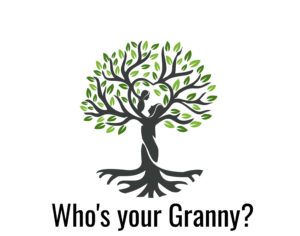 I don’t think it’s overstating things to assert that the pursuit of genealogy has been revolutionized over the past two decades. I first started delving into my family history in the mid 1990s, when a friend brought me with her to the Mercer Museum’s Spruance Library, where the Bucks County Historical Society maintained their archives.
I don’t think it’s overstating things to assert that the pursuit of genealogy has been revolutionized over the past two decades. I first started delving into my family history in the mid 1990s, when a friend brought me with her to the Mercer Museum’s Spruance Library, where the Bucks County Historical Society maintained their archives.
Armed with a notebook and several sharpened pencils, I spent an afternoon immersed in dusty old published family histories and census records that involved searching indexes and battling a microfilm reader. It was glorious. And also daunting.
Fast forward about 10 years, and I was still visiting historical societies and courthouses whenever I got the chance, but I was also blissfully accessing census records at 3 a.m. from the comfort of my home via my computer and courtesy of Ancestry.com. No longer was I limited by an archive’s hours or the soundex version of a census index. I learned how to become creative in my keyword searches, and to work around the names of ancestors being mistranscribed.
These days, as I continue researching not just my own ancestors but also the families of other people, I utilize every online resource I can find. Some of them, like FamilySearch and Irish Genealogy, are free and invaluable. Others, such as Ancestry and Newspapers are subscription databases that I find equally invaluable and worth the price.
Being able to simply Google obituaries online is another capability that we now take for granted. Access to other people’s family trees (though any information found there should always be verified with your own follow-up research, I cannot emphasize that enough), out-of-print family histories compiled by researchers over a century ago now available on Google Books, photographs of great-great grandparents shared by distant cousins—these are all valuable implements readily accessible at a moment’s notice. I am thrilled to be able to have Facebook video chats with my fourth cousins in Australia, cousins that I don’t think I would have ever known existed without the advent of the internet.
But with all this at our fingertips, it’s easy to forget that there is still so much information not available online. In fact, it’s just the tip of the iceberg.
For instance, right here in Philadelphia, the City Archives houses a trove of information you won’t find online. Want to find your great grandparents’ marriage record from 1895 with potentially the names of their parents and the places of their birth on it? The only way to see that is to visit the Archives in person, get a little dusty, use the card catalog and crank up the microfilm reader. It’s inconvenient, it’s time consuming … and one of the most worthwhile feelings of satisfaction you will experience in your pursuit of an elusive ancestor when you see what you’ve uncovered.
For people who have been doing this long enough to have written letters to older family members in the 1970s asking for the names of all of the siblings in Grandpa’s family, this is not a secret. But to researchers who have only been bitten by the bug more recently, this can come as an actual shock. We’ve gotten so used to the convenience of online research that it’s easy to forget that genealogy has been around a lot longer than the internet, and there the truth is that the vast majority of records have not been digitized.
So for everyone who has been using their extra time these past several months to dig a little deeper into their family roots while quarantining, know that when this is all over there is a world of information out there waiting to be gathered firsthand in libraries and heritage centers and courthouses all over the world.


